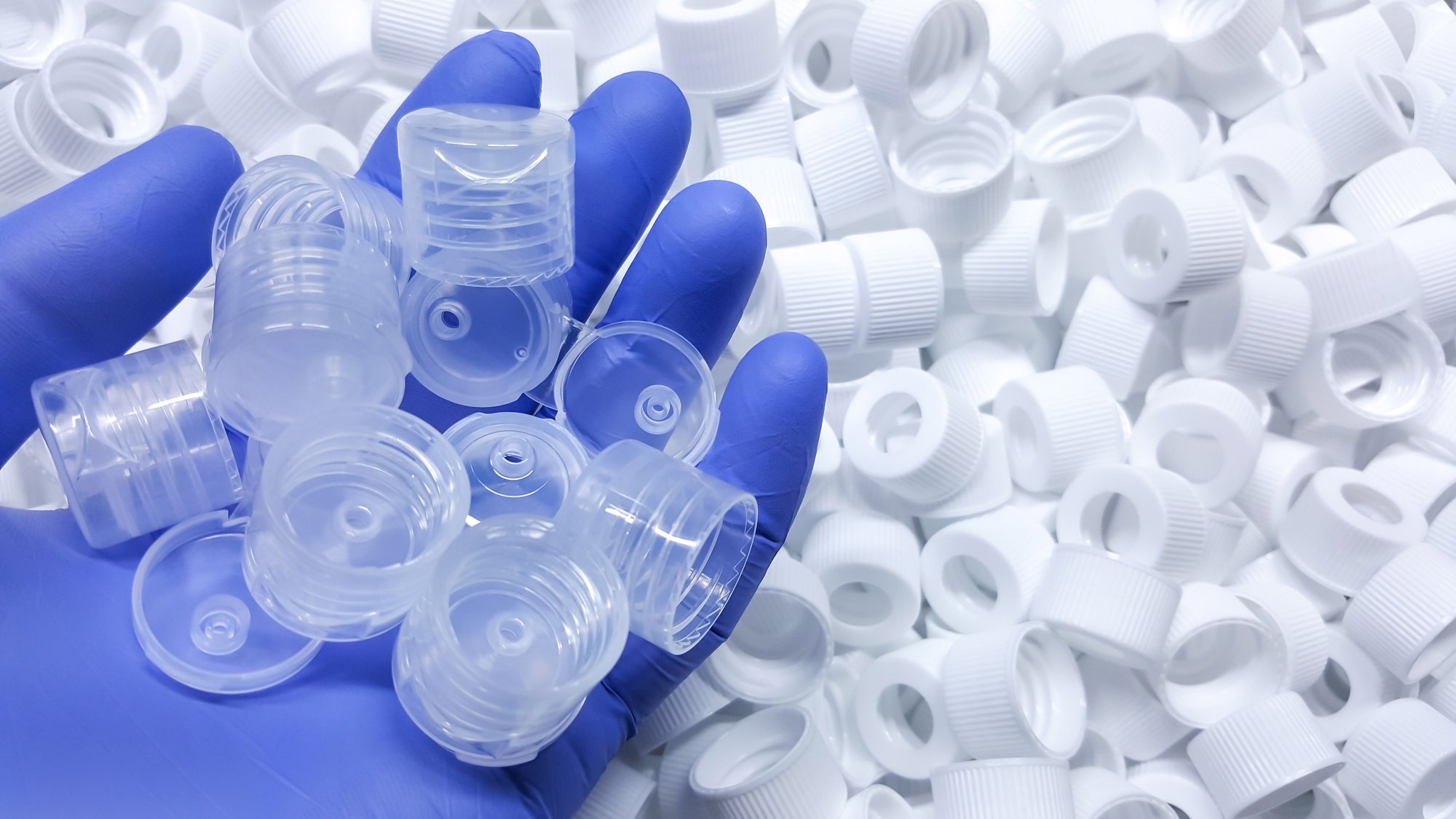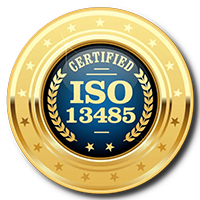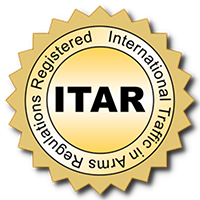Tips to Assist in Making a New Vendor Selection
Tips to Assist in Making a New Vendor Selection for your Injection Molding Project
There are over 16,000 injection molders in the United States alone so it is understandable that choosing a plastic injection molding partner may seem like a daunting task! There are many factors to consider when selecting a molding partner and it is imperative that OEMs do their research to identify the right one! Below are several tips to guide you through the vendor selection process.

History
OEMs should do their homework to better understand the background of each partner they are evaluating. For example, how long have they been in business, who were their previous clients, and have they won any awards or been recognized within the industry? You want an established partner with a proven history and repeat customers.Specifications
Most OEMs have unique and specific product specifications and it is important that potential molders understand and comply with those specifications. Simply put, there is an injection molding vendor available that can manufacture your part without significant specification sacrifices! Partners should readily collaborate with OEMs, providing alternatives to specification challenges as well as design suggestions to save time and money. If this collaboration is not happening, you have not found the right vendor!Materials
There are many different materials that can be used to manufacture a part. In fact, there are over 25,000 raw material options to choose from for plastic injection molding! Certain vendors specialize in the different material types, so it’s important to know what your potential supply base is capable of, and also what they specialize in.Potential vendors need to have the knowledge and ability to guide OEMs through the material selection process to achieve the desired final product properties, such as strength and flexibility, and avoid defects such as warp, flash, and weld lines. Additionally, a molding partner needs to have experience with materials common in the OEMs given industry. For example, if you are manufacturing medical devices, you want to select a partner that has experience with the special plastic blends used in the medical field to provide sterile, chemically resistant parts that are suitable for high-temperature applications.
Tooling Options & Experience
OEMs should determine the potential partner’s injection molding capabilities to ensure they can create a mold for the product properties and volume desired - keeping in mind the right injection molder will be well positioned to grow with you as your demand and product line increases.OEMs should look for a partner that offers a broad range of molding capabilities; the right vendor will have extensive experience with the various tooling and material options offered. For example, do they offer horizontal and/or vertical molding machines? Do they perform molding techniques such as overmolding, insert molding or clean room molding? If an OEM desires a really large or really small product, is the partner equipped to mold these sizes?
Do they offer in-house tooling services? Utilizing an injection molding partner with in-house tooling capabilities, including use of the latest EDM machine tooling technology, has many benefits and can save time and money. Be sure to clearly understand where the tooling is manufactured as some companies only broker deals between you and an overseas mold fabricator – and there are big differences in molds created in the US versus overseas.
Volume
Volume is often a distinguishing factor among injection molders as many vendors specialize in either low, medium, or high-volume production. Low to medium volume vendors are a good choice for runs that do not require hundreds of thousands of parts whereas high volume vendors are a good fit when 750,000+ parts are desired. Does the injection molder have the ability to handle the fluctuations in demand starting at the prototype level and scaling up to the maximum production level anticipated?
In order to be cost-effective, the design of injection molding tooling should be based on the anticipated volume of parts the tooling needs to produce – not significantly more or less. If this rule of thumb is not adhered to, you will develop a tool that is not optimized for your volume needs and you will likely pay too much for tooling, especially in the case of designing for too high a volume. You want to ensure a molding partner can build a tool for the expected volume. Molds are most often constructed in the following mold classes: class 101, 102, and 103. As noted below, each class varies in its standards on the physical tool construction and life expectancy set by the Plastics Industry Association. A good molding partner will guide OEMs through the pros and cons of each class to determine the class that best fits your application.
- Mold Class 101: Rated for One Million or More Cycles. Mold base should be a minimum hardness of 280 BHN. Molding surfaces (cavities and cores) must be hardened to a minimum of 48 Rc. All other details, such as slides, heel blocks, gibs, wedge blocks, etc., should also be of hardened tool steels. Ejection should be guided.
- Mold Class 102: Rated for no more than one million cycles. This mold is identical to the Type 101 with the following items not required: guided ejection, hardened slide wear plates, plated water channels, and, wear plated cavities. All other extras are optional. This tool is a medium to high production tool that is good for abrasive materials and/or close tolerance products.
- Mold Class 103: Rated for Under 500,000 Cycles. Mold base should be a minimum hardness of 165 BHN. Cores and cavities must be 280 BHN or higher. All other extras are optional.
Design & DFM
The design step is typically where the greatest efficiencies are achieved – the result being time and cost savings! Thus, it is crucial for OEMs to understand the design services offered by potential vendors. Will the partner provide design and development services either as your design team - or enhance your in-house staff? Will they collaborate with you to offer design insight and recommendations based on their own experience and knowledge of industry best practices – or simply hand you the final design?Also, OEMs should strongly consider partnering with an injection molder that has Design for Manufacturability expertise; this means the tool design and manufacturing teams are integrated to allow manufacturability issues to be identified and addressed during the design process instead of after the tool is fabricated – saving significant development time and cost!
Secondary Operations
Does the potential partner offer value-add services such as assembly, packaging, pad printing, and other secondary operations to complete your project? These secondary operations offer significant value for OEMs such as streamlining production schedules, improving the consistency and reliability of the final product, and minimizing the number of vendors involved in the manufacturing process. All of these steps improve efficiency - saving OEMs time, resources, and money.Maintenance
The importance of a sound maintenance plan cannot be overstated! All injection molds and associated equipment require maintenance to continue to function properly. Regular inspection, maintenance and cleaning of injection molds are required to maintain part quality, consistency and cycle times as well as the early detection of issues. OEMs need to ask potential partners about their maintenance programs.Turnaround Time
Building a mold for a plastic injection molded part ranges from a few weeks to months. Very early in the discussions with potential vendors, OEMs should clearly state the required timeline to ensure the vendor has capacity and delays are avoided. There is no need to continue discussions with a potential vendor who cannot meet your time constraints. Safety, Health, and Environmental (SHE) concerns aside, when it comes to manufacturing there are 3 drivers for OEMs: cost, schedule, and quality. Vendors can generally offer 2 of the 3. The old adage “you get what you pay for” rings true and is applicable to injection molding! Take your time to find a partner that produces quality parts at a reasonable cost and timeframe.Quality
OEMs need an experienced partner that is familiar with the necessary production planning needed to meet all of the necessary regulatory, quality, and commercial standards. Additionally, OEMs need to ensure a molding partner is providing them with a reliable and dependable process. A supplier’s quality planning and assurance program is more than just meeting the requisite ISO and FDA requirements – it represents their proven way to ensure consistent quality plastic injection molded parts. When assessing a potential molding partner, OEMs should consider the following about their project and the vendor being evaluated. Additionally, OEMs should consider touring the facility to observe the conditions first hand and meet with the Quality Team.
- What inspections and standards does my product have to meet?
- What certifications and registrations such as ISO, FDA, and ITAR does the supplier have?
- If needed, determine the vendor’s ability to provide special environments such as Class 7 and Class 8 FDA-registered working conditions for the production of medical devices?
- Does the supplier have experience manufacturing products for my industry and have they been recognized?
- Does the vendor use the Scientific Approach to Molding, which is often ideal for critical-use medical device components?
- Does the supplier utilize the latest quality software and machine technologies for quality control?
- What is the supplier’s quality track record and the typical level of rework due to quality issues?
- Do a deep dive into the processes that are crucial to your part to understand how. For example, how does the vendor validate tooling? How do they achieve the necessary mold tolerances? How are materials handled during production?
Culture and Relationship
Every vendor has its own unique company culture and relationships with its customers. The value of understanding a vendor’s culture and working style is often over-looked but can have a huge impact on the success of a project. OEMs need to be able to trust their partner and establish good communication practices upfront. A true partner asks for input and listens to an OEM – offering solutions that ensure both parties are aligned and satisfied! Ask potential vendors about their communication preferences and methods, including frequency, as well as identify the primary points of contact. Good communication and a spirit of collaboration is needed from the start so do not ignore any red flags you note during the evaluation process – they will not go away after the vendor is selected!
Additionally, OEMs need to have a direct discussion with potential vendors regarding risk tolerance. Risk and liability are a key element in most OEMs decision-making processes since the OEM is responsible for product issues and failures. This is why many OEMs, especially those in the medical industry, tend to be conservative and risk-averse. It is important for your injection molding vendor to understand – and deliver- when it comes to risk tolerance. Additionally, risk mitigation is another reason many OEMs strongly prefer to minimize the number of vendors involved in the manufacturing process, and select a partner that provides in-house design through production support, as well as secondary operations.
Crescent has been manufacturing injection molded components for over 70+ years and has a rigorous process for in-house design and production of parts that meet our customer’s specific needs. Partner with a company that is on the leading edge of manufacturing technology and continues to reinvest profits into the company’s capabilities.
"Crescent is a supplier with whom we’ve built a strong and solid relationship with over the years. In addition to current business, we turn to them for new projects, because of their proven service, prompt reply and on-going support."
Why Choose Crescent?
Discover the countless benefits of partnering with us for all your injection molding manufacturing needs and let us show you why we are the perfect match for your business.


